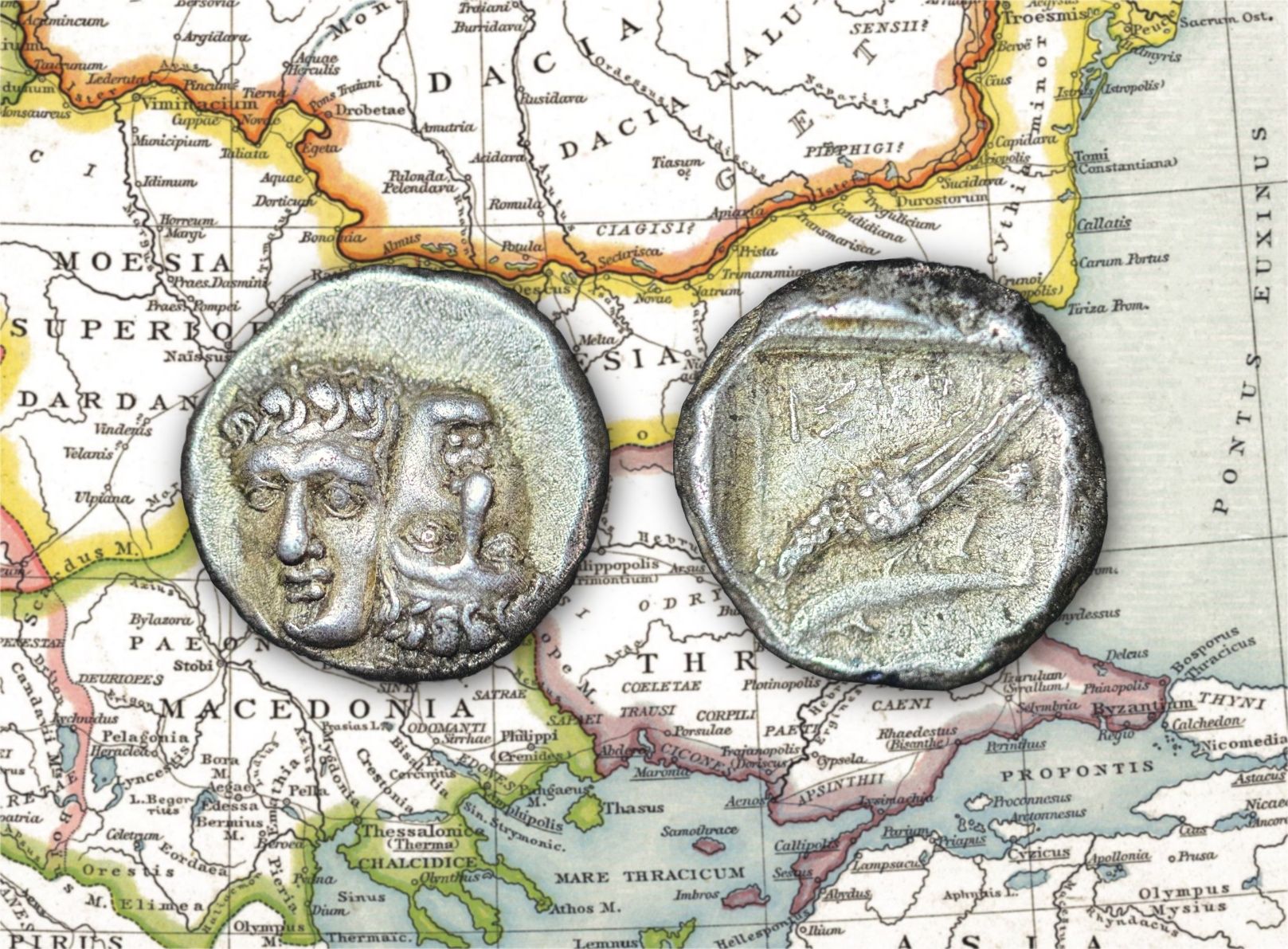Scarce Silver with Twin Heads & Eagle Motif ⚖️
🎭 A fascinating example of early Greek coinage, this silver drachm from Istros in the Moesia region dates to 313–280 BC. On the obverse, it features two male heads — one inverted — believed by scholars to represent either the Dioscuri (Castor and Pollux), twin sons of Zeus, or a symbolic duality of rising and setting, life and death. The mirrored heads remain one of the most iconic and debated designs in ancient numismatics. 🧠
🦅 The reverse displays a bold eagle clutching a dolphin in its talons — a powerful image thought to reflect local identity and divine symbolism. The eagle, associated with Zeus, signifies strength and sovereignty, while the dolphin may represent maritime trade, the Black Sea, or the deity Apollo. Together, the imagery likely conveyed a message of Istros’ dominion and prosperity. 🐬
Struck in what is now modern-day Romania, these coins were used widely across Thrace and the western Pontic coast. Despite their original practicality, Istros drachms with strong detail and preserved features are increasingly scarce on the market today. 🌊
🗓️ Don’t miss this elegant and enigmatic survivor of classical antiquity — part of Auction 2, going live on 12 June 2025 at 12:00 GMT.
Register now and stay tuned for the full catalogue this week! 👀

🐬🦅🎭 Auction 2: Ancient Greece – Moesia, Istros Drachm (313–280 BC)
11 May, 2025
0 Comments